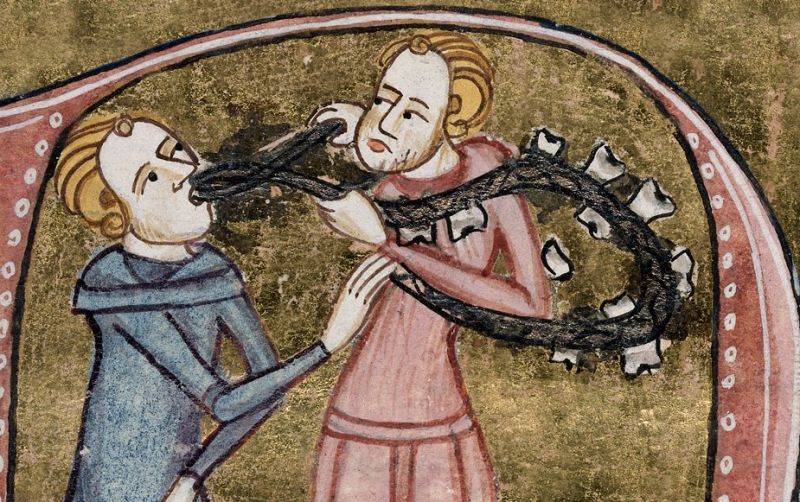
Miniature on a initial “D” with a scene representing teeth (dentes). A dentist with silver forceps and a necklace of large teeth, extracting the tooth of a seated man. Originally published in James le Palmer, Omne Bonum (London, 1360–75).
Miniature on a initial “D” with a scene representing teeth (dentes). A dentist with silver forceps and a necklace of large teeth, extracting the tooth of a seated man. Originally published in James le Palmer, Omne Bonum (London, 1360–75).
Wikimedia Commons. Public domain. This image has been cropped and edited.
 This work is licensed under a Creative Commons Public Domain Mark 1.0 License.
This work is licensed under a Creative Commons Public Domain Mark 1.0 License.
Zelko, Frank. “In the Teeth of History: Dental Decay in the Longue Durée.” Springs: The Rachel Carson Center Review, no. 4 (October 2023).
Every now and then, however, I view the subject through a wider aperture. When did tooth decay become a significant problem, and why? How did humans become so vulnerable to dental deterioration, and why have we gravitated toward foods that are most likely to cause it? Learning about the long history of dental maladies involves detours into physical anthropology, while understanding their etiology requires a dive into microbiology. The overall impression is that the mouth is its own ecosystem, or microbiome, subject to the same kind of perturbations that ecologists find in ponds or forests. (From the article)
This article was originally published in Springs: The Rachel Carson Center Review. Springs is an online publication featuring peer-reviewed articles, creative nonfiction, and artistic contributions that showcase the work of the Rachel Carson Center and its community across the world.
2023 Frank Zelko

This work is licensed under a Creative Commons Attribution 4.0 International License.
This license refers only to the text and does not include any image rights.
Please see captions in the PDF for individual licenses.

